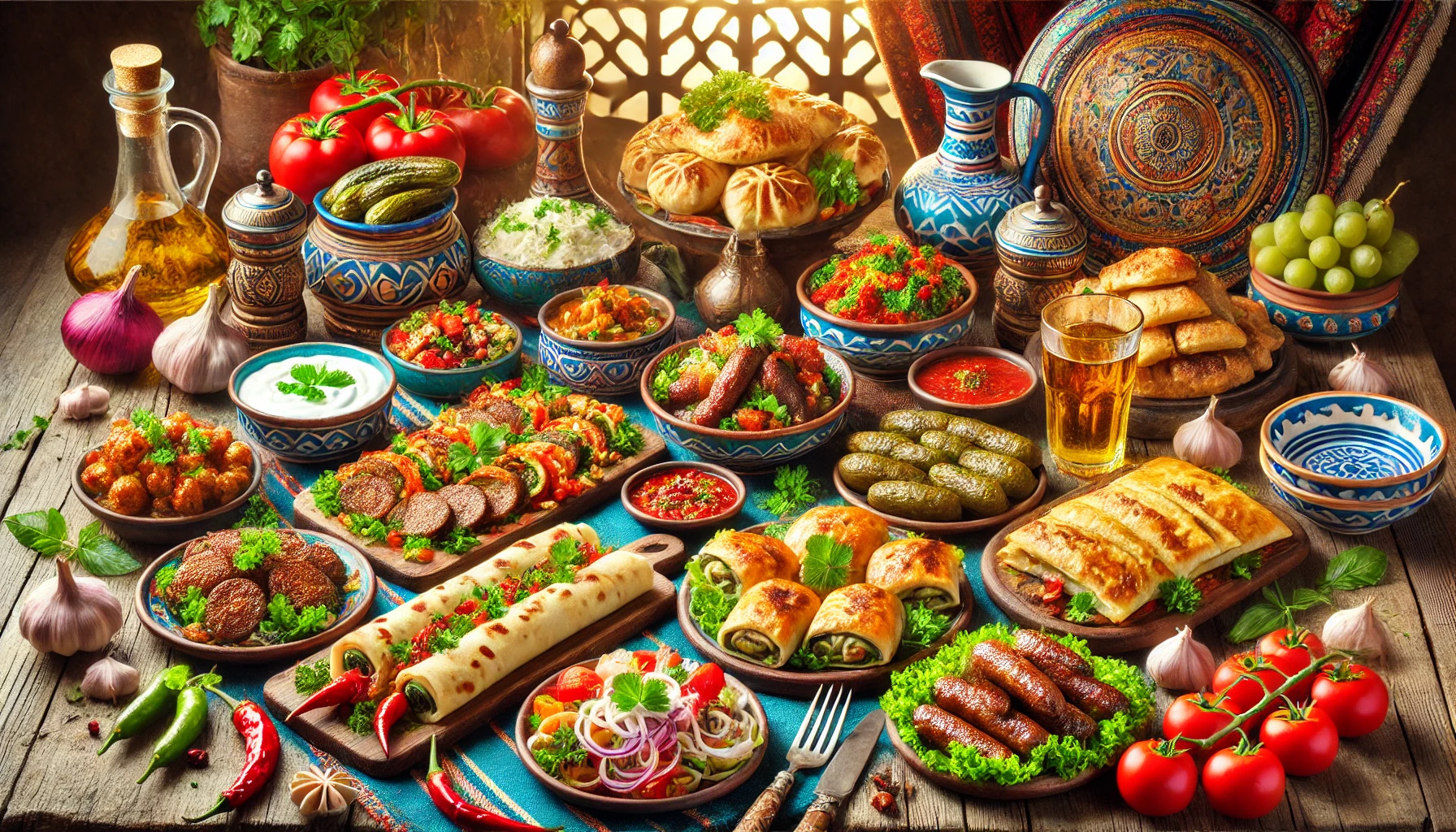Discovering the Rich and Diverse Cuisine of Rumelia
Introduction: A Culinary Journey Through Time
Turkey’s culinary heritage is a testament to its rich history and cultural diversity. Among its many regional cuisines, the dishes of Rumelia—historically known as Turkey in Europe—stand out for their unique flavors and historical significance. Rumelian cuisine reflects the intricate blend of Turkish culinary traditions with those of the Balkans, creating a gastronomic experience that is both diverse and deeply rooted in history. This article delves into the culinary delights of Rumelia, offering an engaging exploration of its most iconic dishes and their cultural contexts.
The Historical Roots of Rumelian Cuisine
The Influence of the Ottoman Empire
The Ottoman Empire played a crucial role in shaping Rumelian cuisine. As the empire expanded westward into the Balkans, it brought with it not only Turkish soldiers and administrators but also cooks trained in the sophisticated culinary arts of Istanbul’s palace kitchens. These cooks introduced a variety of Turkish dishes to the local populations, blending them with regional ingredients and cooking techniques to create a unique culinary fusion.
Cultural Synthesis in the Kitchen
The exchange between Turkish and Balkan culinary traditions was a two-way street. While Turkish dishes like börek and kebabs became staples in the Balkans, local specialties also influenced Turkish cuisine. This synthesis is evident in many dishes that combine elements from both traditions, creating flavors that are both familiar and novel to those who experience them.
Signature Dishes of Rumelia
Green Peppers with Eggs and Cheese
One of the beloved dishes from Rumelia is the Green Peppers with Eggs and Cheese. This simple yet flavorful dish highlights the use of fresh, local ingredients and the importance of dairy in the region’s cuisine.
Ingredients:
- 12 medium sweet green peppers
- 5 eggs
- 400 gm crumbled white cheese
- 2 cups of oil
- 2 large tomatoes
- 2 tablespoons of vinegar
- 3 tablespoons of oil (corn or sunflower seed)
- 2 tablespoons of chopped fresh garlic
- 0.5 teaspoon of granulated sugar
- A pinch of salt
Method:
- Remove the stalks and seeds from the peppers.
- Mix the eggs and cheese, then stuff the peppers with this mixture.
- Heat oil in a saucepan and fry the peppers until golden brown.
- Prepare a sauce by simmering grated tomatoes, vinegar, oil, garlic, sugar, and salt.
- Pour the sauce over the stuffed peppers and serve.
Baked Leeks with Pastirma and Sausage
This dish is a hearty and savory representation of Rumelian comfort food, combining leeks with flavorful meats and cheese.
Ingredients:
- 1 kg leeks
- 5 tablespoons olive oil or margarine
- 0.5 cup of water
- 4 eggs
- 1 cup grated mild yellow cheese (kasar)
- 3 tablespoons of flour
- 1 cup chopped dill
- Salt and black pepper to taste
- 4-5 slices of pastirma (garlic pastrami)
- 3 slices of sucuk (garlic sausage)
- 3 slices of ham
- Paprika
Method:
- Slice and cook the leeks with olive oil and water until softened.
- Mix in eggs, cheese, flour, dill, and seasonings.
- Add chopped pastirma, sucuk, and ham.
- Pour into a greased baking dish, sprinkle with paprika, and bake until browned.
Elbasan Tavasi: A Lamb Delicacy
Elbasan Tavasi is a classic Rumelian dish that showcases the region’s love for lamb and yogurt-based sauces.
Ingredients:
- 2.5 kg leg of lamb
- 1 medium grated onion
- 2 cups of water
- 6 eggs
- 1 tablespoon of flour
- 1 tablespoon of corn starch
- 3 cups of yogurt
- 1 teaspoon dried mint
- Salt and black pepper to taste
- 2 tablespoons of butter
- 3 teaspoons of paprika or hot red pepper
Method:
- Cook the lamb with onion and water until tender.
- Prepare a creamy mixture of eggs, flour, corn starch, and yogurt.
- Layer the yogurt mixture and lamb in a baking dish, sprinkle with mint, salt, and pepper.
- Bake until browned, then top with melted butter mixed with paprika before serving.
The Cultural Significance of Rumelian Cuisine
A Reflection of Historical Migration
Rumelian cuisine is not just about flavors; it tells the story of historical migrations and cultural exchanges. As Turkish families moved from the Balkans to modern Turkey, they brought with them their culinary traditions, enriching Turkish cuisine with new recipes and cooking techniques.
Preservation of Culinary Heritage
Today, the dishes of Rumelia are a cherished part of Turkish cuisine, preserving the culinary heritage of a region that has seen numerous cultural influences over the centuries. These dishes are a testament to the enduring legacy of the Ottoman Empire and the rich, diverse history of the Balkans.
Experiencing Rumelian Cuisine
Cooking at Home
Many Rumelian dishes can be easily recreated at home, allowing you to experience the rich flavors of this unique cuisine. Using fresh ingredients and traditional cooking methods, you can bring a taste of Rumelia to your kitchen.
Dining in Turkey
For those traveling to Turkey, experiencing Rumelian cuisine is a must. Many restaurants, particularly in Istanbul and other major cities, offer a variety of Rumelian dishes, providing a delicious and authentic taste of this historical cuisine.
Conclusion: A Culinary Treasure Trove
Rumelian cuisine is a treasure trove of flavors and history, reflecting the rich cultural tapestry of the Balkans and Turkey. By exploring its diverse dishes, we not only enjoy delicious meals but also connect with the historical and cultural heritage of a region that has played a significant role in shaping the world’s culinary traditions. Whether you’re cooking at home or dining out in Turkey, the dishes of Rumelia are sure to provide a memorable and enriching culinary experience.
Latest Update: Jul 31, 2024
Your Content Goes Here
A brief summary of the key points in this article.




